While tablets were once a niche only techies were interested in, they’re now regarded as one of the most versatile pieces of tech you can buy, widely used not only for entertainment but school, work and even digital art creation. The issue is that there are so many to choose from in 2023, so which is the best tablet for your needs?
Not every tablet is worth the asking price, and not everyone needs the very best tech around to achieve what they’re after. We’ve tested a multitude of tablets over the years, all the way from the pre-iPad days, so we know what we’re talking about when it comes to a great tablet.
Some of the most common issues with tablets you can run into include poor build quality, unoptimised software – which is a particular issue on some Android tablets – and battery life that won’t last longer than a few episodes of The Office (US) on Netflix.
That decision is made even more challenging when you consider the constant release of new tablets. While the Android tablet market died down for a few years, it has seen a resurgence in the last 18 months, and 2023 is set to be a particularly exciting time in the Android tablet space. Google has confirmed that it will be re-entering the tablet market with the Pixel Tablet, complete with big-screen-ready Android 12L software, sometime in 2023, and the new OnePlus Pad is rumoured to go up for pre-order in April after an MWC 2023 reveal.
But if you’re interested in buying a new tablet right now, we’ve created this guide detailing the best tablets that are currently on the market. And if you can’t find what you’re looking for right now, bookmark this page and come back soon, as we’ll be updating this list whenever another great tablet comes through our doors.
And if you’re looking for something that aligns with a specific brand, you can check out our best Fire tablet, best iPad and best Android tablet guides.
Best tablet at a glance
How we test
Every tablet in this list has been properly tested and used for an extended period of time by one of our product experts. We categorically do not recommend a product unless it has been put through our lab tests and used by the reviewer as their main tablet for at least five days.
Lab testing includes colourimeter checks to gauge screen accuracy and max brightness levels, synthetic benchmarks to evaluate graphics and general performance, and battery drains to assess average discharge rates for basic office tasks, streaming video and gaming.
Our reviewer will then move on to consider the tablet’s performance for everyday use. This will see them use it as their primary tablet and enact common tasks such as movie streaming, gaming, web browsing and video calling. If the device is targeted at a specific market such as digital artists, they’ll also consider areas such as digital stylus support and whether it can effectively run relevant applications.
When a device is sent in for review with optional extras, such as a stylus and keyboard cover, we’ll assess its performance both as a standalone product as well as with any accompanying peripherals.
 Best overall
Best overall - Great display
- Support for excellent accessories
- Seriously powerful internals
- Attractive design and array of colours
- Annoying front camera placement
- No 128GB storage option
- Creaky body
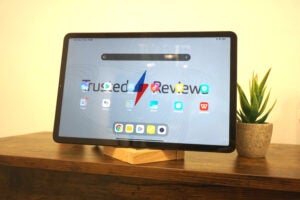 Best Android tablet
Best Android tablet - Excellent screen that’s ideal for Neflix and gaming
- Decent every day performance
- Good build quality
- Powerful speaker setup
- Software features some bloatware
- Demanding tasks heavily impact battery
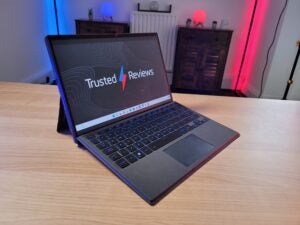 Best for gaming
Best for gaming - Extremely portable with hybrid design
- Great performance for casual gaming
- Superb screen quality
- Option to boost performance with eGPU
- Poor battery life undermines portability
- Optional eGPU is very expensive
- Type cover is a poor gaming keyboard replacement
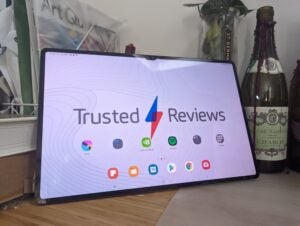 Best for streaming
Best for streaming - Large screen is perfect for streaming movies and playing games
- Fast performance
- Great work from Samsung makes it quick and easy to scribble notes using the included S Pen
- The DeX desktop view is a welcome bonus when you need to do basic office work
- The big screen means demanding tasks like gaming put a serious drain on its battery
- Not a lot of creative apps on Google’s official app store compared to iPadOS
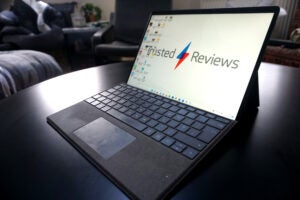 Best for work
Best for work - Solid performance
- Great screen for work and play
- Reliable battery life, especially in 60Hz
- Well-built kick stand
- Signature Cover and Slim Pen 2 not included
- Limited port selection
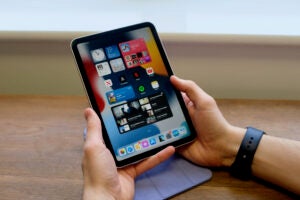 Best small tablet
Best small tablet - Great new design
- Works with the second-gen Apple Pencil
- Super-speedy thanks to the A15 Bionic chipset
- 5G option makes for great portability
- Odd storage sizes
- Expensive
- Some iOS elements are too small
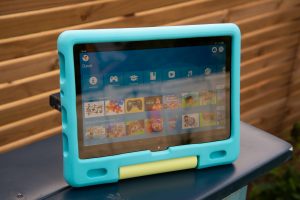 Best for kids
Best for kids - Super-chunky case offers a lot of protection
- Excellent parental controls
- Worry-free guarantee
- Bright screen
- A little expensive
- Limited app library
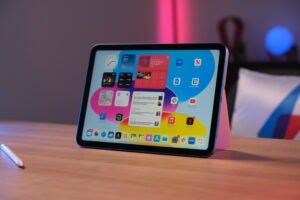 Best cheap iPad
Best cheap iPad - The design is a massive upgrade
- USB-C is far more convenient than Lightning
- Smart front camera placement
- Unbeatable tablet apps and software
- Huge price jump, especially in Europe makes its position in Apple’s iPad range confusing
- Odd Apple Pencil integration
- 64GB isn’t enough (256GB probably too much)
 Best for creatives
Best for creatives - Stunning display on the 12.9-inch version
- Fantastic design and finish
- Lots of tablet apps
- So much power
- Only the 12.9-inch model gets the best screen
- Very few upgrades over previous model
- M2 chip feels a little wasted
iPad Air 5
The best tablet for most people
Pros
- Great display
- Support for excellent accessories
- Seriously powerful internals
- Attractive design and array of colours
Cons
- Annoying front camera placement
- No 128GB storage option
- Creaky body
The iPad Air 2022 is the best all-round tablet we’ve reviewed and the option we’d recommend to most people.
Reviewing the device, we struggled to find any serious issues with the tablet. Straight out of the box, the tablet presented the premium, well-built feeling that has assured iPad Air tablets have been consistent high scorers at Trusted Reviews. The metal finish feels nice to the touch and suffers no flex when pressed; following a fortnight with the device, and an accidental drop, our review unit remained free of any damage free.
As a piece of hardware, it’s also excellent. In tests we found the iPad Air 2022 more than powerful enough for everyday use. Powered by Apple’s M1 chip, the same silicon seen in its MacBook Air M1 and the last gen Apple iPad Pro line, the tablet blasted through every process thrown its way. Every game we opened ran hassle-free, and the device never once heated up, even when tackling large-scale vector graphics work in Affinity Designer. Trust us when we say – despite being part of Apple’s Air, not Pro, line of tablets, this is a powerhouse performer.
Apple’s iPadOS software is also significantly more developed than that of Android. During testing, we never struggled to find an app for the process we wanted to run. This makes it wonderfully flexible and suitable for use as a backup when paired with the option Apple Pencil and Magic Keyboard.
The only minor issue is that, like all Apple peripherals, the keyboard and stylus are expensive additions. We also aren’t the biggest fans of the keyboard cover’s switches, which still feel a little squishy compared to most of the dedicated laptops we test. We’d only recommend it for taking notes during lectures, rather than for writing dissertations, as a result.
The 11-inch screen is great for watching video content, offering suitably bright and accurate colours for an immersive viewing experience. Our reviewer was also impressed with the tablet’s speakers, which offered surprisingly powerful and detailed audio, to make watching TV in bed a blast.
If that wasn’t enough, our tests showed that the iPad Air 4 is capable of offering users all-day battery life. Our reviewer regularly managed 10 hours of heavy use before the tablet required charging. Streaming 10 hours of a downloaded iTunes video, the battery still had 3% remaining during our tests.
Our only slight quibble is that, unlike many of its Microsoft and Google rivals, the screen is a basic LCD panel with a locked 60Hz refresh rate. This means the device fell slightly short of delivering the deep blacks seen from its Pro Mini-LED siblings and Android rivals such as the Galaxy Tab S8 Ultra, which has an OLED screen.
We’d also have liked Apple’s Promotion to make an appearance. Promotion is a screen technology that boosts the tablet’s refresh rate to 120Hz, enabling it to render twice as many images per second. The feature works great and, based on our experience, ensures the Pro screens feel much smoother to use than those of the Air models.
Ordinarily, we’d have forgiven the Air considering its price; but, recently, we’ve seen rival devices at the same price, such as the Xiaomi Pad 5 with its 120Hz screen, pass through our labs. As such, the Xiaomi Pad 5 is a great alternative for those looking for an all-round awesome 11-inch tablet, but who aren’t embedded in Apple’s software ecosystem.
Reviewer: Max Parker
Full review: iPad Air 2022 Review
Xiaomi Pad 5
The best Android alternative to the iPad Air
Pros
- Excellent screen that’s ideal for Neflix and gaming
- Decent every day performance
- Good build quality
- Powerful speaker setup
Cons
- Software features some bloatware
- Demanding tasks heavily impact battery
The Xiaomi Pad 5 is the closest like-for-like rival to the iPad Air 2022 that we’ve tested. Based on our results, the device is a powerhouse product that goes toe-to-toe with – at times, even beats – the iPad Air at a technical level. Out of the box our reviewer was immediately taken back by the tablet’s build quality, with its pristine metal edges looking great and its flat back feeling solid enough to survive the odd bump and scrape. Like the iPad Air, the frame offered no flex at all when pressed.
The screen is LCD, like the Air’s, but it has a faster 120Hz refresh rate. This made it much better for gaming, with our reviewer regularly running GeForce Now on the device on his lunch break during testing. The screen also features Dolby Vision HDR support, which, again, on paper gives it an edge over the Air.
In real-world use the Xiaomi came close to matching the iPad Air as a home entertainment station. Colours looked wonderfully vibrant watching HDR content from Netflix, and the speakers, while not quite as controlled as the iPad Air’s, did a decent job of adding to the immersion felt when consuming content. The speakers can reach quite high volumes, and we didn’t detect any distortion, even when using the tablet at its max level. Distortion is a common issue across many of the mid-range Android tablets we test, such as the Galaxy Tab S7 FE.
The Xiaomi Pad 5’s battery life is excellent, with our review unit matching the iPad Air 4 in offering around 10 hours of video playback in tests. This involved looping content stored on the device until battery life dropped to zero. Using the device as his primary tablet for a fortnight, our reviewer never once struggled to get a full week of regular use from the Pad 5. This entailed using it as an e-reader on his commute to work, and a web-browsing and media-consumption station through the evenings.
Some minor issues that stopped us fully recommending the Pad 5 on the same level as the iPad Air relate to the device’s software and use of a slightly older Qualcomm Snapdragon 860 CPU. As is the case with nearly all the Android tablets we test, many apps aren’t optimised to run on screens of this size. As a result, we found most – including Facebook and Instagram – looked slightly stretched out on the Xiaomi Pad 5.
In addition, software support for the Xiaomi isn’t as solid as that offered with the iPad; Xiaomi offers no firm pledges about how many updates it will guarantee for the Pad 5. This is a big deal – not receiving updates to the latest version of Android would radically shorten the Pad 5’s lifespan, diminishing its long-term appeal. By comparison, Apple iPads are updated to new versions of iPadOS so long as their hardware can run it.
Reviewer: Alastair Stevenson
Full review: Xiaomi Pad 5 Review
Asus ROG Flow Z13
The best for gaming The best for gaming
Pros
- Extremely portable with hybrid design
- Great performance for casual gaming
- Superb screen quality
- Option to boost performance with eGPU
Cons
- Poor battery life undermines portability
- Optional eGPU is very expensive
- Type cover is a poor gaming keyboard replacement
The Asus ROG Flow Z13 is one of the first, and only, tablets designed to offer a full-fat PC gaming experience that isn’t reliant on a cloud service such as GeForce Now.
Out of the box, however, the tablet doesn’t scream gaming, with the black slate being blissfully free of any RGB lighting. In fact, our reviewer described the Windows tablet as looking a lot like a first-generation Microsoft Surface Pro, featuring a rugged but chunky tablet section with a reliable kickstand, which could easily see the device used in a lecture hall or coffee shop without drawing too much attention.
Like all the Microsoft Windows tablets we test, the device is clearly designed to be used as a laptop first and tablet second. The kickstand and attachable keyboard, coupled with its large dimensions, make it a lot less comfortable to hold and use in landscape orientation than most Android or Apple iPad rivals.
However, if a mobile PC gaming tablet that can double as a laptop for basic office tasks is what you’re after, it’s an excellent choice.
The big differentiator between the Asus ROG Flow Z13 and the sea of other Windows tablets, including Microsoft’s current Surface Pro 8, is the fact that it comes with a dGPU option. Specifically, the review unit we tested was powered by an Intel Core i9-12900H CPU and an Nvidia RTX 3050 Ti GPU. There’s also a cheaper version available, which comes with a less powerful Intel Core i5-12500H and Intel Iris Xe graphics.
The 3050 Ti GPU is a rarity – we haven’t seen it in any other tablet – and a clear sign of the tablet’s gaming focus, as well as the primary reason for its increased size.
During testing, the combo saw the ROG Flow Z13 play games at surprisingly high frame rates. We managed to get big-name titles including Borderlands 3, Dirt Rally and Horizon Zero Dawn running at playable rates post-30fps, with the tablet set to a 1080p resolution during our time with the device. Less demanding titles, such as Fortnite and Apex Legends, ran much smoother and at times approached 60fps, again with graphics settings lowered. As a rule of thumb, games need to run at 30fps or higher – any lower and it will look like it’s chugging.
As an added bonus the Z13 also has an external GPU option. This is an expensive peripheral that lets you radically boost game performance by connecting the Asus ROG Flow Z13 to an external XG Mobile dock containing a much more powerful RTX 3080 graphics card. Our tests showed the connection led to three times better performance when gaming.
The only downside to the device is its high upfront cost, and the fact that some sacrifices have had to be made to accommodate the 3050 Ti graphics card. For starters, the keyboard isn’t as comfortable to use as the Type Cover available for the Surface Pro 8. In tests we found the Asus keyboard felt cramped, with its keys failing to offer as tactile feedback as the Surface’s keyboard – which itself isn’t perfect.
The added graphical grunt also heavily impacted battery life. During our time with the Asus ROG Flow Z13, it never once managed to last more than five hours running productivity applications, and its battery would die in less than two hours while lightweight gaming. This is radically behind competing devices such as the Surface Pro 8, which managed to last a full work day (eight hours) when tested.
We’d also suggest that any buyers simply looking for a way to play PC games on-the-go consider the Valve Steam Deck. In tests we found the Steam Deck, which comes with attached gamepad controls, managed to match the Asus ROG Flow Z13’s performance and offered longer battery life. The only downside is that it can’t be used as a laptop replacement in the same way as the Asus.
Reviewer: Ryan Jones
Full review: Asus ROG Flow Z13 Review
iPad Pro M2
The tablet for creatives
Pros
- Stunning display on the 12.9-inch version
- Fantastic design and finish
- Lots of tablet apps
- So much power
Cons
- Only the 12.9-inch model gets the best screen
- Very few upgrades over previous model
- M2 chip feels a little wasted
The iPad Pro M2 is the best tablet we’ve tested for those looking for pure high-end performance. If you’re a creative, an artist or someone looking to replace a laptop with a tablet then this is the best pick.
As the Pro branding suggests, this is the top-end Apple tablet and it boasts the most features. It’s also available in two sizes: 11-inch and 12.9-inch, with the larger model toting the very best screen we’ve ever seen on tablet.
In our tests, our reviewer was blown away by the display, with the Mini-LED 12.9-inch screen proving to be the best mobile panel for HDR content. We were wowed by the level of brightness on offer, and the accuracy of the colours displayed. The move to Mini-LED also made blacks look incrementally deeper than those rendered on the LCD iPad Pro M2 11-inch.
Cracking out our colorimeter, our naked-eye impressions were confirmed, with the iPad Pro delivering one of the best performances we’ve seen for a tablet marketed at creatives.
Our positive experience was further enhanced by the screen’s Promotion tech which is available on both sizes. This is Apple’s marketing term for high refresh rate and it means the iPad Pro M2 can display up to 120 images per second, up from 60 on the iPad Air. This makes everything feel a lot smoother, from drawing and sketching to gaming and scrolling Twitter.
The M2 chip powering the device is more than powerful enough to easily run every app tested, with our reviewer noticing zero performance issues, even when editing video. However, there are limited apps out there that will fully take advantage of this chip – at least at the time of review.
Reviewer: Max Parker
Full review: iPad Pro M2
Samsung Galaxy Tab S8 Ultra
The best tablet for streaming
Pros
- Large screen is perfect for streaming movies and playing games
- Fast performance
- Great work from Samsung makes it quick and easy to scribble notes using the included S Pen
- The DeX desktop view is a welcome bonus when you need to do basic office work
Cons
- The big screen means demanding tasks like gaming put a serious drain on its battery
- Not a lot of creative apps on Google’s official app store compared to iPadOS
If you’re hankering after a big-screen tablet, but don’t fancy the iPad Pro 12.9-inch, then the Samsung Galaxy Tab S8 Ultra is pretty much your only other option at the moment.
The tablet was unveiled alongside the smaller Galaxy Tab S8 and Tab S8 Plus, which we’re yet to review, and is being marketed by Samsung as a direct rival to the iPad Pro.
The moment our reviewer took it out of the box it was apparent that Samsung has put all its eggs into the Ultra’s size and screen. Measuring in at 14 inches, the Ultra is the biggest tablet on this list and – aside from the Wacom Mobile Studio Pro – the largest tablet to pass through our labs. It took our reviewer a good two days to get used to the tablet’s generous proportions, and the lack of a kickstand means you’ll 100% need to invest in a case to fully take advantage of all the tablet has to offer. All-in-all, If you want a satchel-friendly tablet that can easily be used one-handed, this definitely isn’t the tablet for you.
But, if you want a big screen for immersive video streaming or GeForce Now cloud gaming sessions then we couldn’t recommend the Ultra enough. On powering up the tablet, its screen immediately proved to be one of the best we’ve seen on an Android tablet for media consumption.
The 14.6-inch AMOLED panel is wonderful for watching video and playing games, the AMOLED tech presenting perfect blacks. This, coupled with solid brightness, saw this tablet deliver the best HDR performance we’ve seen from an Android tablet. Streaming BladeRunner, details lost in dark scenes on the older Galaxy Tab S7 Plus and Xiaomi Pad 5 were on full display here. Add to this detailed audio from its speakers, and you have a wonderfully immersive viewing experience.
The tablet also features a top 120Hz refresh rate, which is great for gaming. Streaming games over the cloud with a Razer Raiju controller connected, the large screen offered fantastic reactive gameplay in 1440p, making it a great option for gamers looking for a tablet to play on when away from the TV.
This was aided by the Galaxy Tab S8 Ultra’s solid battery life, with the tablet generally offering three-plus-hours of gaming over the cloud – more generous than the two hours we achieved using the Asus ROG Flow Z13. The only downside is that you’ll need a reliable 5G or Wi-Fi connection; the tablet’s Android software means you can’t access key gaming marketplaces, such as Steam, for local triple-A gaming.
Despite its size, and the fact it comes with an S Pen stylus included, we’d recommend creatives and power users on the hunt for a laptop replacement opt for the iPad Pro 12.9-inch or Surface Pro 8 instead. Although the Tab S8 Ultra’s screen is great for entertainment, our colorimeter tests show that it doesn’t cover as much of the Adobe and DCI-P3 colour gamuts as the iPad Pro. Specifically, it covered only 72.1% of the sRGB and 74.7% of the DCI-P3 gamuts. This puts it roughly on a par with the Surface Pro 8, but behind the iPad Pro 12.9-inch. Ideally, we’d want any screen designed for creatives to cover at least 80% of these gamuts. Gamuts are ranges of colours used to gauge how accurately images rendered on a screen are compared to how they will look when physically printed.
We didn’t get a chance to test the tablet’s official keyboard cover, but we found that Android’s offering of creative and productivity apps isn’t on a par with iPad OS or Windows 11. The Adobe creative suite on Android is a cut-down version designed for mobile phones, not the full fat version you’ll find on iPad OS or Windows, limited to basic filters, cropping and repair functionality. Krita also remains the only painting app that’s properly optimised for stylus inputs and with proper keyboard shortcut support.
Reviewer: Alastair Stevenson
Full review: Galaxy Tab S8 Ultra Review
Microsoft Surface Pro 8
The best tablet for work
Pros
- Solid performance
- Great screen for work and play
- Reliable battery life, especially in 60Hz
- Well-built kick stand
Cons
- Signature Cover and Slim Pen 2 not included
- Limited port selection
If you want a tablet-come-laptop for work then based on our testing, the Surface Pro 8 is the tablet to buy. This is largely due to the tablet’s use of full-fat Windows 11. Our tests revealed that this made it the most versatile option as a working laptop replacement.
The tablet uses proper laptop processors and has access to every app and programme available on Windows. As such, our reviewer found that it was the only device on the list that could comfortably be used both as a 100% functional laptop for work and tablet for entertainment.
With every other device, including the iPad models, we experienced times where we had to move to a laptop to complete some work tasks. This usually occurred when we needed to plug peripherals such as colorimeter or older external monitors into the device, because iPadOS and Android had failed to recognise them.
Paired with a Type Cover, we also found the keyboard is one of the best available to a tablet. The new keyboard has a carbon fibre layer, which makes it feel a lot sturdier to type on, removing the flex I experienced with past Type Covers. The key’s switches also have a more pleasing and tactile actuation point than Apple’s Magic Keyboards, making it more comfortable to work on for prolonged periods.
As an added perk, the keyboard also has a
